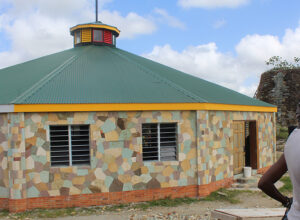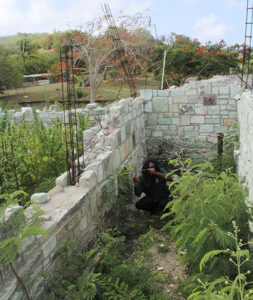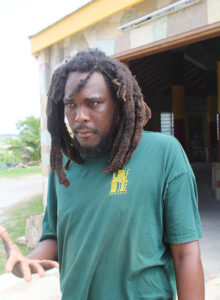By Anthony Joseph

Anthony Joseph, publisher of The Caribbean Camera, was one of two Canadian media representatives who were in Antigua for the recent carnival as guests of the government of Antigua and Barbuda.
One of the highlights of my visit to Antigua during the recent carnival was a tour of Ras Freeman, the former Willis Freeman Plantation, now a Rastafarian community with big plans for development.
The area was leased to a Rastafarian group for 25 years by the government of Antigua and Barbuda. On the site now stands The Tabernacle, the community’s place of worship and its first major project.
Ras Ritchie, CEO of Humble and free wadadli, who took a group of visiting journalist on the tour of Ras Freeman, said work on The Tabernacle started in 2000, “and it was built in stages.”
“It’s a community effort but from time to time we called in technical people from outside to work on the construction,” he said.
The centre post of The Tabernacle and its rafters are all made of lignum vitae, the hardest and heaviest traded wood, which came from the forests of Guyana, Ras Ritchie pointed out.

Described as “the heartbeat of the Rastafarian movement in Antigua,” The Tabernacle is certainly an impressive sight and it’s worth visiting.
Ladies are required to wear skirts or dresses below the knee and have their heads completely covered before entering The Tabernacle.
“We have plans to develop in Ras Freeman a dispensary, a boutique and a guest house,” said Ras Ritchie.
The Rastafarian hub consists of acres of agricultural land on which is cultivated a variety of fruits and vegetables which he noted is helping to make Antigua “a more food secure nation.”
Also growing in greenhouses and fields in the hub is sacramental cannabis (marijuana).
Ras Ritchie also noted that the Rastafarians are also pushing ahead to develop a medical marijuana industry and hope to “grow the crop for export.”
As one walks through the hub, one encounters many of the ruins of the Willis Freeman plantation such as the old slave house, and sugar cane mill predating 1834.
The tour of Ras Freeman was certainly a stroll through history but with a look at positive developments for the future of this Rastafarian community.
http://15.223.68.226/visiting-ras-freeman/
[ngg src=”galleries” ids=”96″ display=”basic_thumbnail”]



